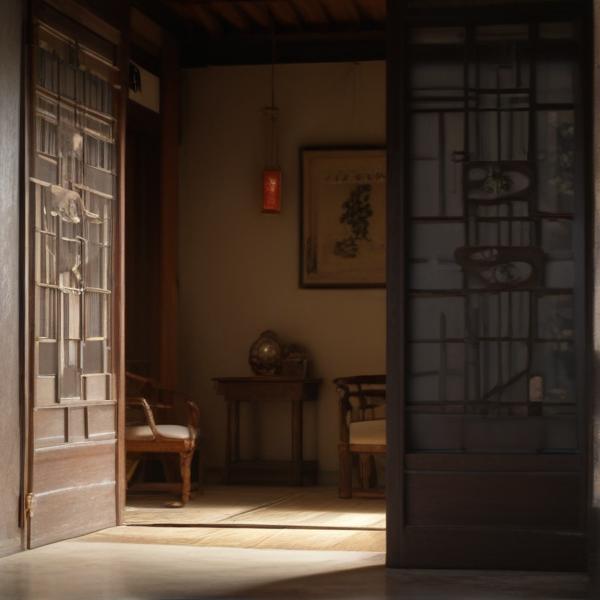基本信息 (Basic Information)
含义与用法 (Meanings & Usage)
中文核心释义 (Core Chinese Meaning): 眼球,指眼睛的珠子部分,常用于“眼睛”一词中,特指能看东西的部分。
英文核心释义 (Core English Meaning): Eyeball; the part of the eye that can see; often appears in the word 'eye(s)'.
象形意义 / 为何这么写 (Pictographic Meaning / Writing Rationale)
文言文释义 (Classical Chinese Meaning)
与现代意义相近,指眼珠、有时泛指眼睛。Similar to modern meaning: refers to the eyeball, sometimes generally to the eyes.
深入学习 (In-depth Study)
字源故事 (Origin Story)
字形演变 (Character Evolution)
常用词语和例句 (Common Words & Examples)
眼睛 (eyes)
她的眼睛很大,很有神。
Eng: Her eyes are big and spirited.
目不转睛 (to gaze fixedly; to look with unwavering attention)
孩子目不转睛地看着动画片。
Eng: The child was watching the cartoon with unwavering attention.
相关成语 (Related Idioms)
目不转睛
Meaning: to look at something intently, without shifting one's gaze
多语言翻译 (核心释义) (Translations (Core Meaning))
- French: pupille; globe oculaire
- German: Augapfel; Pupille
- Spanish: globo ocular; pupila
- Italian: bulbo oculare; pupilla
- Portuguese: globo ocular; pupila
- Russian: глазное яблоко; зрачок
- Arabic: مقلة العين؛ بؤبؤ العين
- Persian: کره چشم؛ مردمک
- Dutch: oogbol; pupil
- Polish: gałka oczna; źrenica
- Vietnamese: nhãn cầu; con ngươi
- Ukrainian: очне яблуко; зіниця
视频学习资源 (Video Learning Resources)
通过以下链接在热门视频网站搜索 "睛" 的更多讲解:
Search for more explanations of "睛" on popular video sites:
- 在 Bilibili.com 搜索 "睛 字源 说文解字" (Search on Bilibili)
- 在 YouTube.com 搜索 "Jing character origin etymology" (Search on YouTube)
网络参考 (Web References for "睛") ()
网络内容摘要 (Web Content Summary):
睛的核心含义是指“眼珠”或“眼球”,专指眼睛的重要组成部分,通常与视力相关。 Jīng (睛) mainly means "eyeball" or "pupil"—the essential part of the eye related to vision.
-
“睛”的结构包含“目”(表示眼睛)和“青”(在这里既是声旁也是形旁),象征着眼部精巧、重要的部分。部分资料推测,“睛”最早表达的是“眼之晶状体”,即眼内透明、精致的结构,这体现了古人对眼睛结构的关注。 "睛" is composed of the elements "目" (eye) and "青" (functioning as both phonetic and semantic component), symbolizing the eye's crucial and refined part. Early interpretations suggest it originally referred to the eye’s crystalline lens, showing the ancient focus on the structure of the eye.
-
常用词有“眼睛”(eyes),其中“睛”专指眼珠。“睛”一般很少单独使用,常与“眼”连用。 A common word is "眼睛" (yǎn jīng; eyes), where "睛" specifically refers to the eyeball or globe. "睛" is rarely used alone and usually paired with "眼".
-
容易与“精”(精华、精细)混淆。二者读音相同但意义不同;“睛”特指与眼相关的内容。 It is easily confused with "精" (jīng, meaning essence or refinement). Both sound the same but have different meanings—"睛" relates specifically to the eye.
-
相关成语有“炯炯有神”(形容眼睛明亮有神)。 A related idiom is "炯炯有神" (jiǒngjiǒng yǒu shén), describing bright and spirited eyes.
总结:“睛”强调眼睛内部精巧与视力相关的部位,是“眼睛”中不可或缺的字,学习时要注意与“精”的区别。 Summary: "睛" focuses on the eye's refined, vision-related part. It is a key character in "眼睛" (eyes) and should not be confused with "精" (essence, refinement).
汉字"睛"的起源、演变过程-汉字字源辞典
青 ,既是声旁也是形旁,是" 精 "的省略,表示精巧完美(事物最优秀的部分)。 睛 ,甲金篆字形暂缺,隶书 (目,眼) (青,即"精"),表示眼部精巧完美的组织。 推测造字本义:名词,精巧完美的眼之晶状体,双凸面的透明组织,被悬韧带固定悬挂在虹膜之后玻璃体之前,通过睫状肌的 ...
睛《汉字字源》_汉字「睛」_睛在汉字字源中的解释 - 国学大师
睛《汉字字源》,汉字「睛」,睛在汉字字源中的解释,国学大师,汉语字典 明清实录 | 二十四史 | 四库全书 | 古今图书集成 | 历史人物 | 说文解字 | 成语词典 | 甲骨文合集 | 殷周金文集成 | 象形字典 | 十三经索引 | 字体转换器 | 篆书识别 | 近义反义词 | 对联大全 ...
更多图片 (睛 More Images) ()
